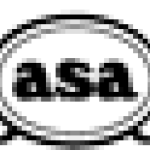- Отрасли: Aviation
- Number of terms: 16387
- Number of blossaries: 0
- Company Profile:
Aviation Supplies & Academics, Inc. (ASA) develops and markets aviation supplies, software, and books for pilots, flight instructors, flight engineers, airline professionals, air traffic controllers, flight attendants, aviation technicians and enthusiasts. Established in 1947, ASA also provides ...
Meteorological conditions expressed in terms of visibility, distance from cloud, and ceiling less than the minimums specified for visual meteorological conditions.
Industry:Aviation
Meteorological visibility within a specified sector of the horizon circle.
Industry:Aviation
Microscopic plant life that lives in water entrapped inside aircraft fuel tanks. The growth of bacteria in jet aircraft fuel tanks forms a film of scum which holds water against the aluminum alloy surfaces and causes corrosion to form.
Industry:Aviation
Military activity that requires locating individual photo targets and navigating to the targets at a preplanned angle and altitude. Photo reconnaissance normally requires a lateral route width of 16 nautical miles and an altitude range of 1,500 feet to 10,000 feet AGL.
Industry:Aviation
Minimum altitudes for IFR operation as prescribed in 14 CFR Part 91. These altitudes are published on Aeronautical charts and prescribed in 14 CFR Part 95 for airways and routes, and in 14 CFR Part 97 for standard instrument approach procedures. If no applicable minimum altitude is prescribed in 14 CFR Parts 95 or 97, the following minimum IFR altitude applies:
# In designated mountainous areas: 2,000 feet above the highest obstacle within a horizontal distance of five statute miles from the course to be flown.
# Other than mountainous areas: 1,000 feet above the highest obstacle within a horizontal distance of five statute miles from the course to be flown.
# As otherwise authorized by the Administrator or assigned by ATC.
Industry:Aviation
Minimum altitudes for IFR operations as prescribed in 14 CFR Part 91. These altitudes are published on aeronautical charts and prescribed in Part 95 for airways and routes, and in Part 97 for standard instrument approach procedures.
Industry:Aviation
Minimum fuel is the amount of fuel necessary for one half hour of operation at the rated maximum-continuous power setting of the engine and, for weight and balance purposes, is 1/12 gallon per METO (maximum-except-takeoff) horsepower. It is the maximum amount of fuel which could be used in weight and balance computations when low fuel might adversely affect the most critical balance conditions. To determine the weight of the minimum fuel in pounds, divide the METO horsepower by 2.
When computing the adverse loaded center of gravity conditions of an aircraft, if the fuel pulls the center of gravity into the correct range, the minimum fuel must be used.
Industry:Aviation
Minimums listed in 14 CFR Part 91, prescribing standard takeoff rules for certain civil users. At some airports, obstructions or other factors require the establishment of nonstandard takeoff minimums, departure procedures, or both, to assist pilots in avoiding obstacles during climb to the minimum en route altitude. Those airports are listed in NOS/DOD Instrument Approach Charts (IAPs) under a section entitled “IFR Takeoff Minimums and Departure Procedures.” The NOS/DOD IAP chart legend illustrates the symbol used to alert the pilot to nonstandard takeoff minimums and departure procedures.
When departing IFR from such airports or from any airports where there are no departure procedures, SIDs or ATC facilities available, pilots should advise ATC of any departure limitations. Controllers may query a pilot to determine acceptable departure directions, turns, or headings after takeoff. Pilots should be familiar with the departure procedures and must assure that their aircraft can meet or exceed any specified climb gradients.
Industry:Aviation
More than normal bending of a radar beam resulting from abnormal vertical gradients of temperature and/or water vapor.
Industry:Aviation
